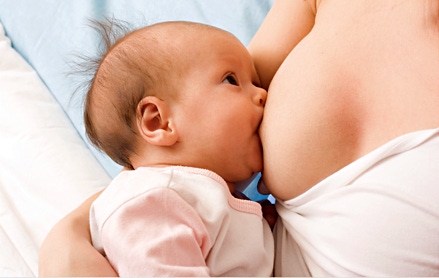Bioactive Proteins in Breast Milk - Can Their Bioactivities Be Provided from Cow's Milk Proteins?
8 min read
/
Bo Lönnerdal
Distinguished Professor of Nutrition and Internal Medicine
University of California, Davis, Calif., USA
bllonnerdal@ucdavis.edu
University of California, Davis, Calif., USA
bllonnerdal@ucdavis.edu
Key Messages
- Breast-fed infants have a lower risk of acute illness, diabetes, obesity and cardiovascular disease than formulafed infants.
- Bioactive proteins in breast milk contribute to the health benefits of breast-feeding.
- Some proteins in cow's milk have structures and functions similar to those of their corresponding breast milk proteins.
- Dairy technology now allows the enrichment of some of these proteins, and they may be added to infant formulas.
- Clinical trials are needed to evaluate whether supplementation of infant formulas with such proteins will provide health benefits.
Content

Breast-feeding has been shown to result in both short- and long-term benefits with regard to health and cognitive development and a reduced risk of diabetes, obesity, and cardiovascular disease. Many of these benefits have been associated with bioactive proteins in breast milk [1]. Among these bioactive proteins are lactoferrin, α-lactalbumin, and milk fat globule membrane (MFGM) proteins.
Lactoferrin is an iron-binding protein and a major constituent (10–20%) of the protein in breast milk. It is known to inhibit the growth of, or kill, potentially harmful bacteria and has anti-inflammatory activity in the gastrointestinal tract of breast-fed infants [2]. Lactoferrin has a very stable structure and is therefore relatively difficult to break down; in fact, intact lactoferrin is found in considerable amounts in the stool of breast-fed infants [3]. It can be taken up by human intestinal cells and is capable of binding to the nucleus of the cell [4]. There, it can affect the expression of various genes, which most likely explains its effects on the immune system and on cellular growth and proliferation.
α-Lactalbumin is also a major protein (15–20%) in human milk. During its digestion in the gastrointestinal tract of breast-fed infants, peptides are released that, in turn, have been concentrashown to have biological activity. Among these peptides are an immune- stimulating peptide, peptides enhancing the absorption of essential micronutrients such as iron and zinc, and peptides that have prebiotic activity, i.e. that stimulate the development of a beneficial gut microflora [5].
MFGM proteins are associated with the lipids in milk and are very diverse in composition and function [6]. They have been shown to have both anti-bacterial and anti-viral activities. Human milk MFGM proteins have been shown to bind to various rotavirus strains and prevent replication, an ability that was associated to a specific protein, namely lactadherin [7]. Further, the concentration of lactadherin in breast milk was shown to be negatively correlated to rotavirus infection in Mexican infants [8].
Breast milk contains a multitude of bioactive proteins, but the concentrations of the above-mentioned proteins are particularly high. They are, however, also present in cow’s milk, albeit at considerably lower concentrations. Thus, if they could be enriched and concentrated, they can possibly be added to infant formulas. However, as they are somewhat different in structure from their human milk counterparts, it is important to evaluate if they can provide any of the bioactivities of the breast milk proteins. Such tests need to be done in the research laboratory, and if successful, clinical trials on human infants will be required.
References
- Lönnerdal B: Bioactive proteins in breast milk. J Paediatr Child Health 2013;49(suppl 1):1–7.
- Lönnerdal B: Nutritional roles of lactoferrin. Curr Opin Clin Nutr Metab Care 2009;12:293–297.
- Davidson LA, Lönnerdal B: Persistence of human milk proteins in the breast-fed infant. Acta Paediatr Scand 1987;76:733–740.
- Liao Y, Jiang R, Lönnerdal B: Biochemical and molecular impacts of lactoferrin on small intestinal growth and development during early life. Biochem Cell Biol 2012;90:476–484.
- Lönnerdal B, Lien EL: Nutritional and physiologic significance of alpha-lactalbumin in infants. Nutr Rev 2003;61:295–305.
- Liao Y, Alvarado R, Phinney B, Lönnerdal B: Proteomic characterization of human milk fat globule membrane proteins during a 12 month lactation period. J Proteome Res 2011;10:3530–3541.
- Yolken RH, Peterson JA, Vonderfecht SL, Fouts ET, Midthun, K, Newburg DS: Human milk mucin inhibits rotavirus replication and prevents experimental bacteriostasis. J Clin Invest 1992; 90;1984–1991.
- Newburg DS, Peterson JA, Ruiz-Palacios GM, et al: Role of human-milk lactadherin in protection against symptomatic rotavirus infection. Lancet 1998;351:1190–1194.
